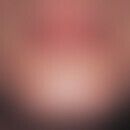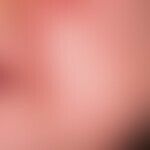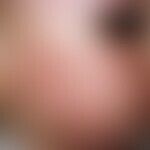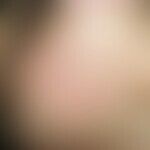Synonym(s)
acne infantilis; acne in infancy; infantile acne; Infantile acne; neonatal acne; Newborn acne
DefinitionThis section has been translated automatically.
Form of acne manifesting itself in infancy (3-6 months) (Serna-Tamayo C et al. 2014)
Acne conglobata infantum is a particularly severe form of acne in children.
Infantile acne must be distinguished from the so-called neonatal acne (Acne neonatalis), which is a frequent disease of the infant within the first 3 months of life, aetiogically as "Malazessia furfur" infection(Malazessia folliculitis of the infant).
EtiopathogenesisThis section has been translated automatically.
Mostly unclear. Passanger increased testosterone release from the gonads is suspected. In any case, a differentiated endocrinological examination is necessary to rule out androgen-producing tumours. Also to be excluded are comedogenic cosmetics which are used for "normal" skin care.
You might also be interested in
ManifestationThis section has been translated automatically.
Occurring in the third to sixth month of life. Boys are more frequently affected than girls.
LocalizationThis section has been translated automatically.
Limited to the face, especially the cheek region.
ClinicThis section has been translated automatically.
Differential diagnosisThis section has been translated automatically.
External therapyThis section has been translated automatically.
Mild skin cleansing, no superfluous local therapy, no greasy bases, external therapy with benzoyl peroxide (e.g. acne oxide) in lowest concentration e.g. 1-2% under observation for a few minutes, if necessary low doses of Adapalen 0.1% (Differin Gel/Creme).alternatively Azelaic acid (e.g. Skinoren Cream) can be tried.
Notice!
Pay attention to the concentration and duration of application of the active ingredients used, as the absorption rate is significantly increased in small children.Internal therapyThis section has been translated automatically.
In severe cases one will have to resort to antibiotic therapy, e.g. erythromycin (e.g. paediathrocin) 2 times/day 125 mg p.o.
Progression/forecastThis section has been translated automatically.
After months to years scarred healing.
Note(s)This section has been translated automatically.
Acne infantum should be the reason for an endocrinological clarification (exclusion of an androgenital syndrome).
LiteratureThis section has been translated automatically.
- Herane MI et al (2003) Acne in infancy and acne genetics. Dermatology 206: 24-28
- Jansen T et al (1997) Pathogenesis and treatment of acne in childhood. Pediatric Dermatol 14: 17-21
- Disc rider S (1967) Acne infantum. Z Pediatric medicine 99: 195-198
- Serna-Tamayo C et al (2014) Neonatal and infantile acne vulgaris: an update. Cutis 94:13-6.
Incoming links (4)
Acne conglobata infantum; Acne infantilis; Neonatal cephalic pustulose; Sebaceous gland hyperplasia neonatal;Outgoing links (9)
Acne conglobata infantum; Azelaic acid; Benzoyl peroxide; Congenital adrenal hyperplasia1; Contact acne; Erythromycin; Neonatal cephalic pustulose; Papel; Pustule;Disclaimer
Please ask your physician for a reliable diagnosis. This website is only meant as a reference.







